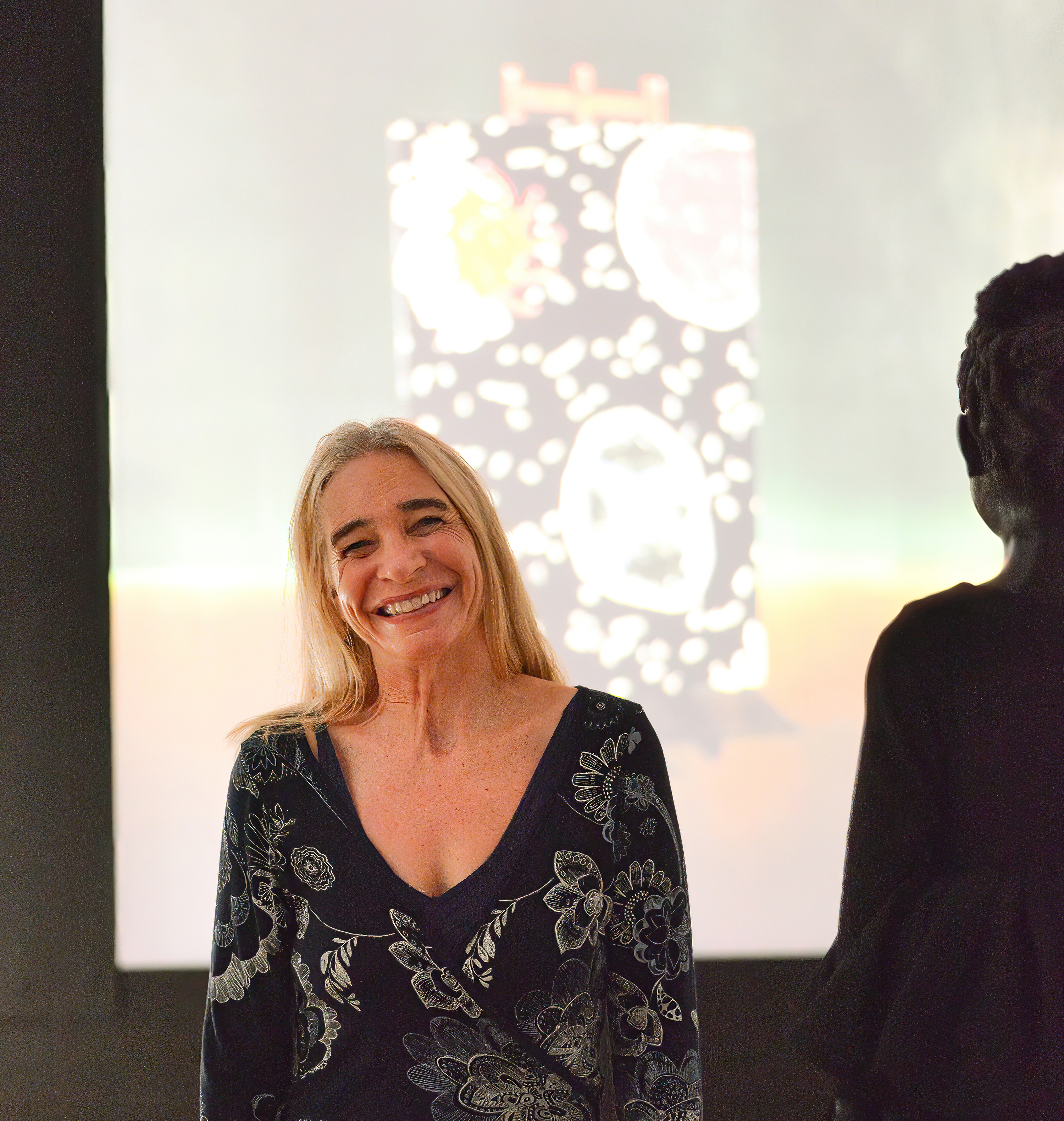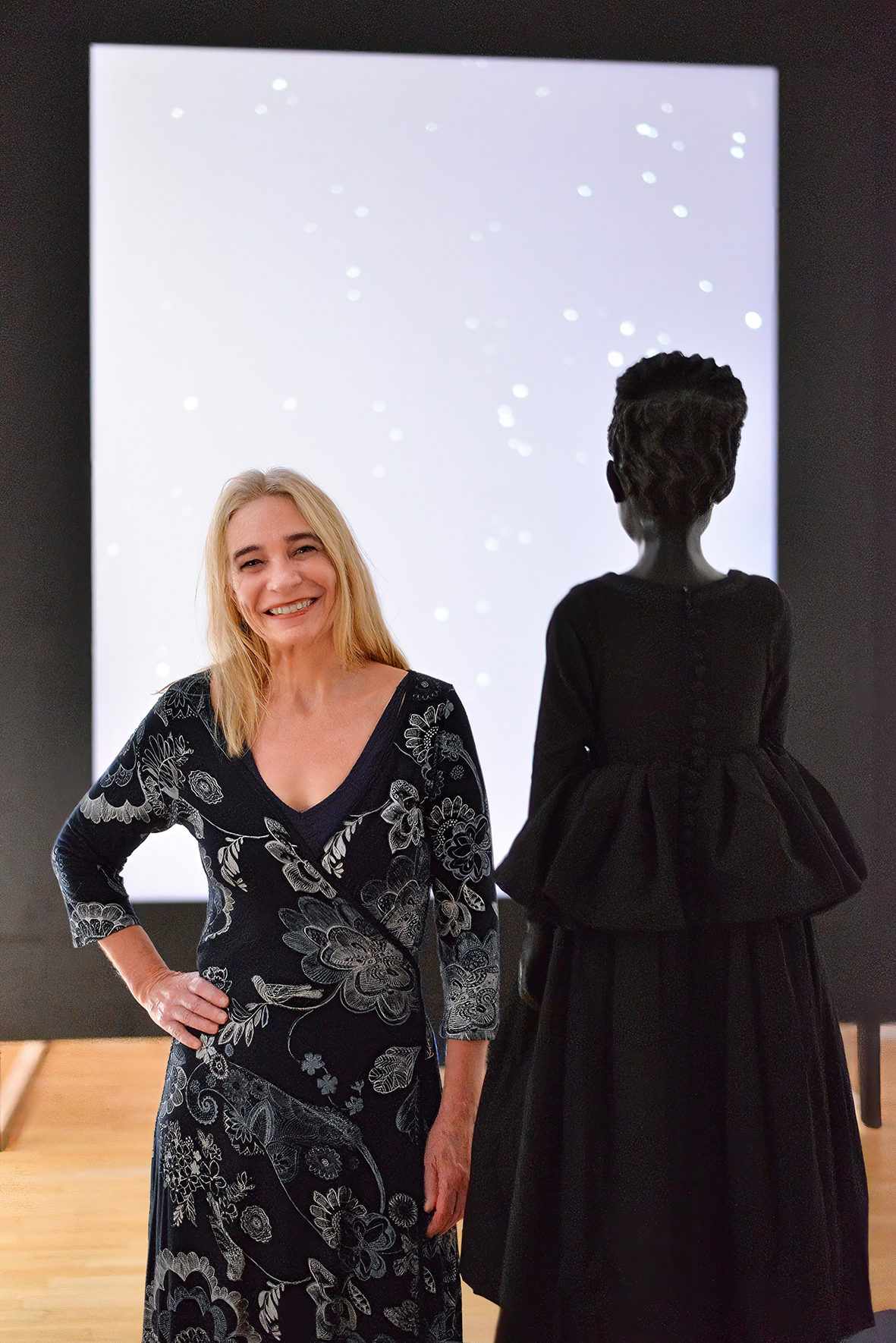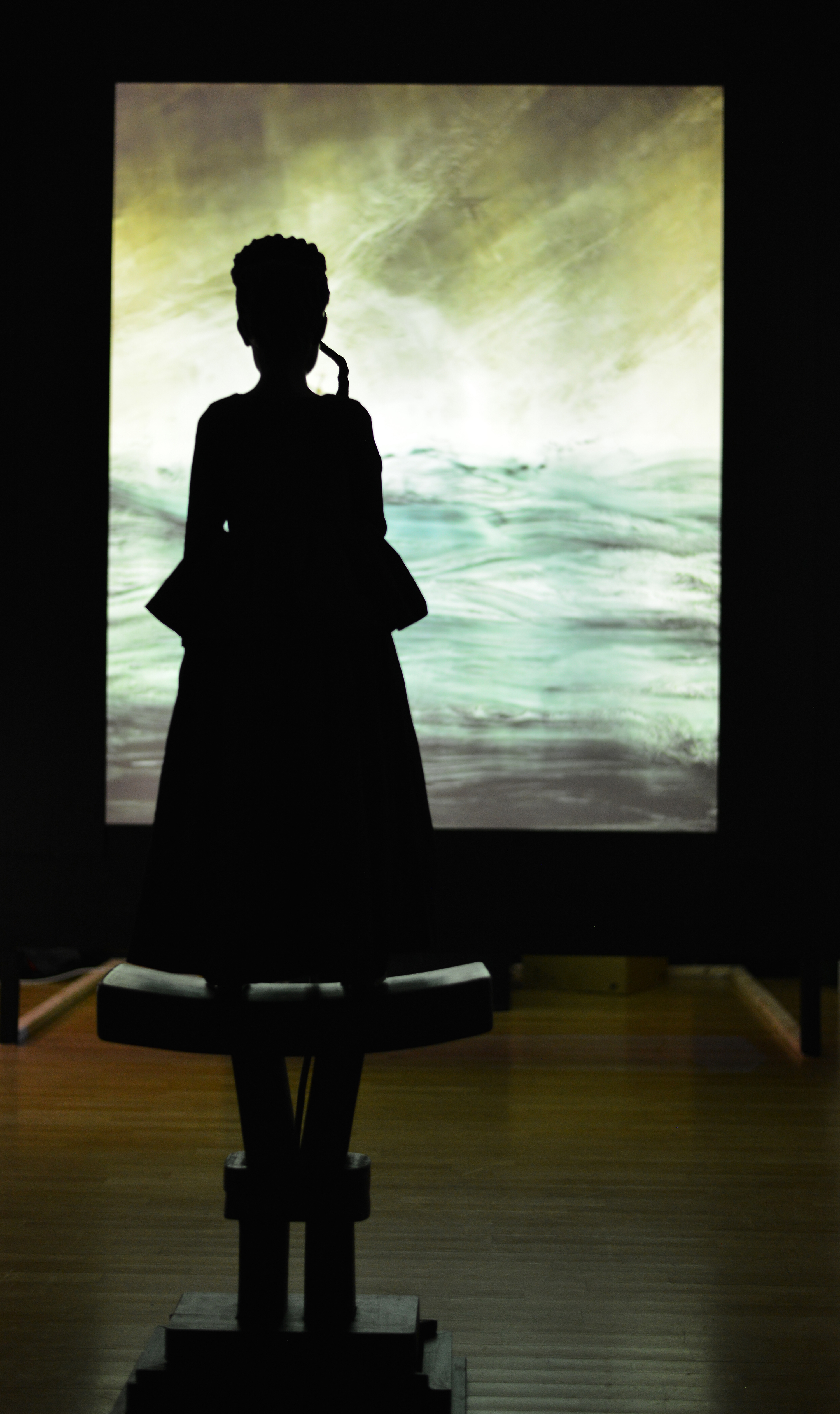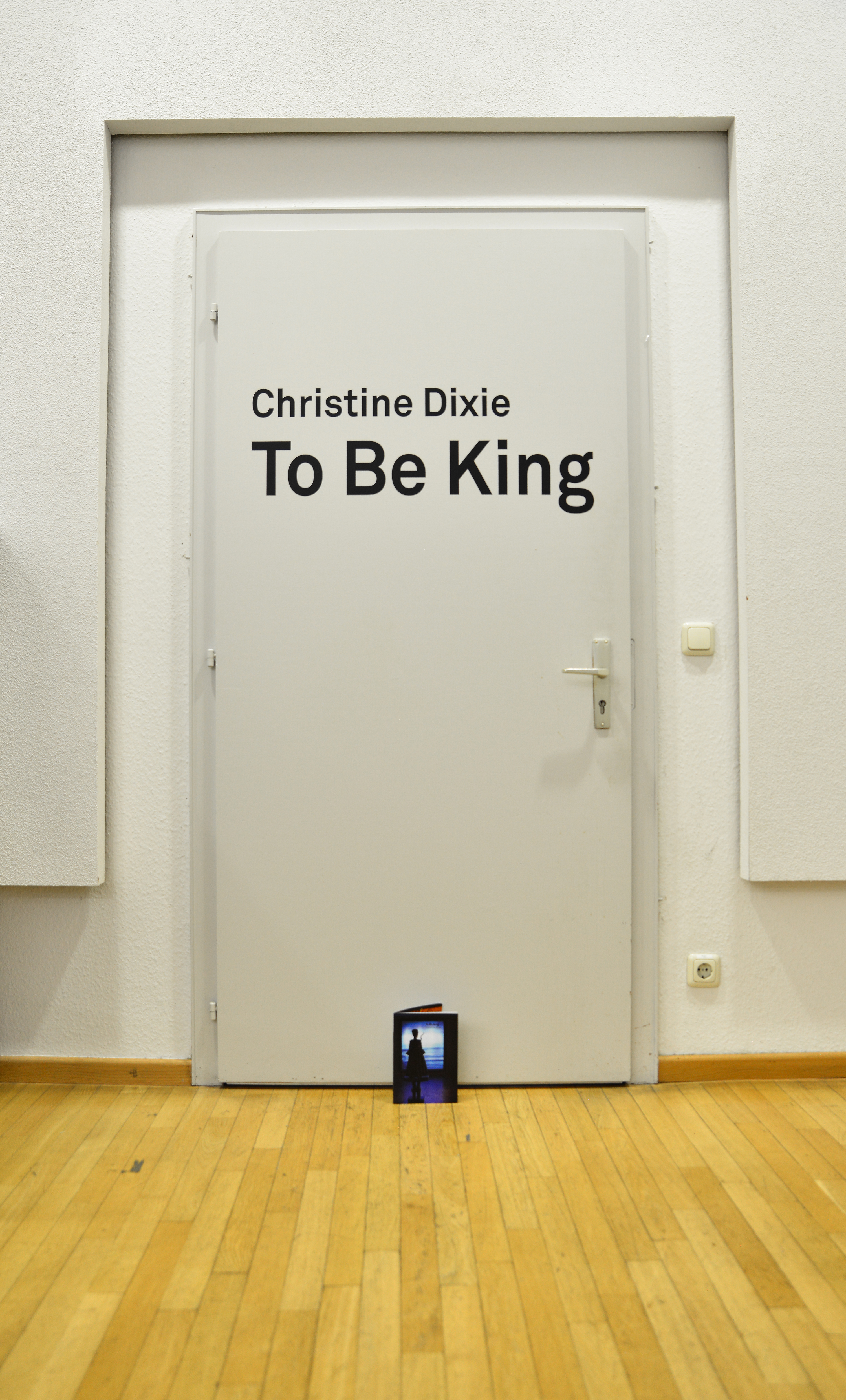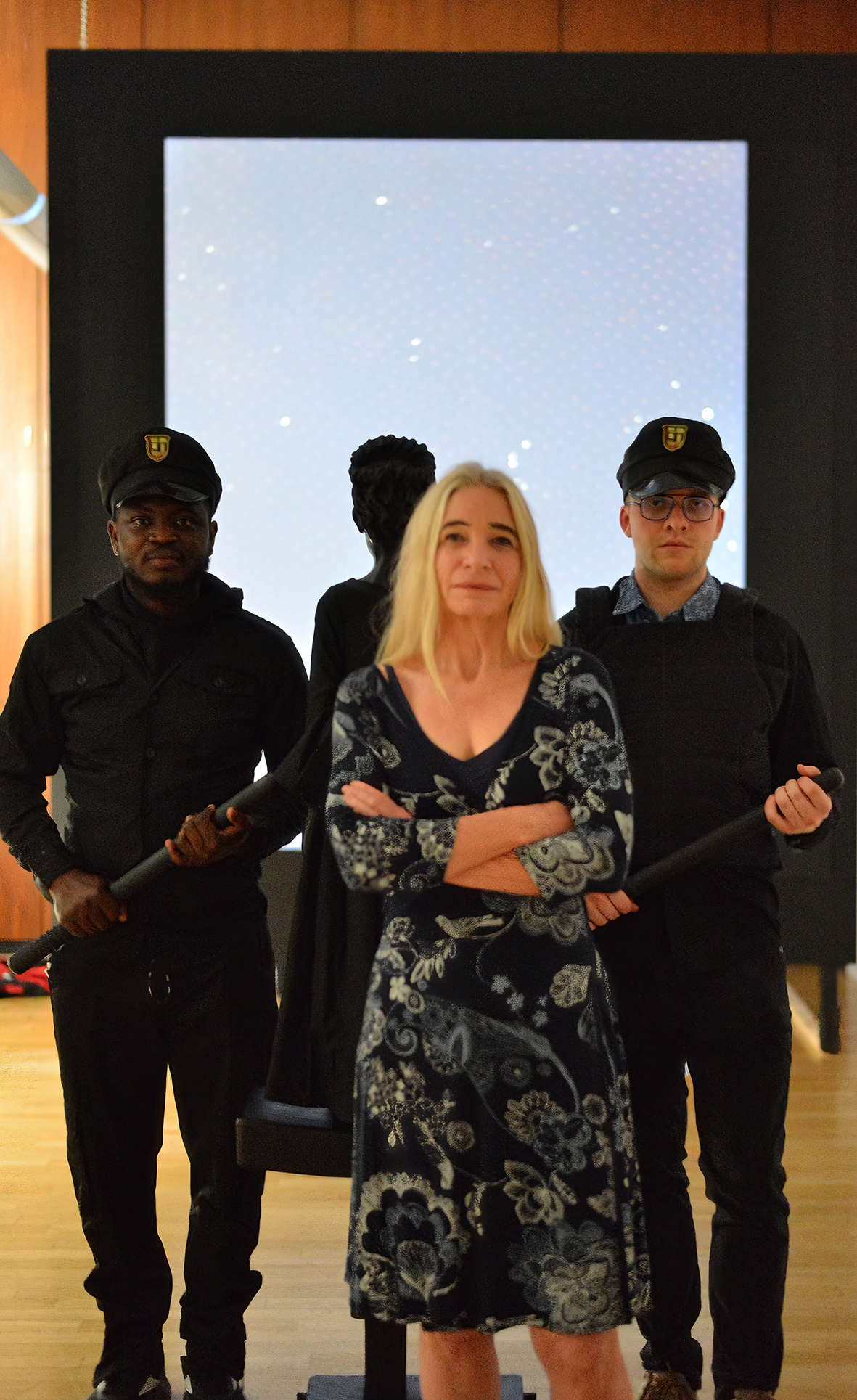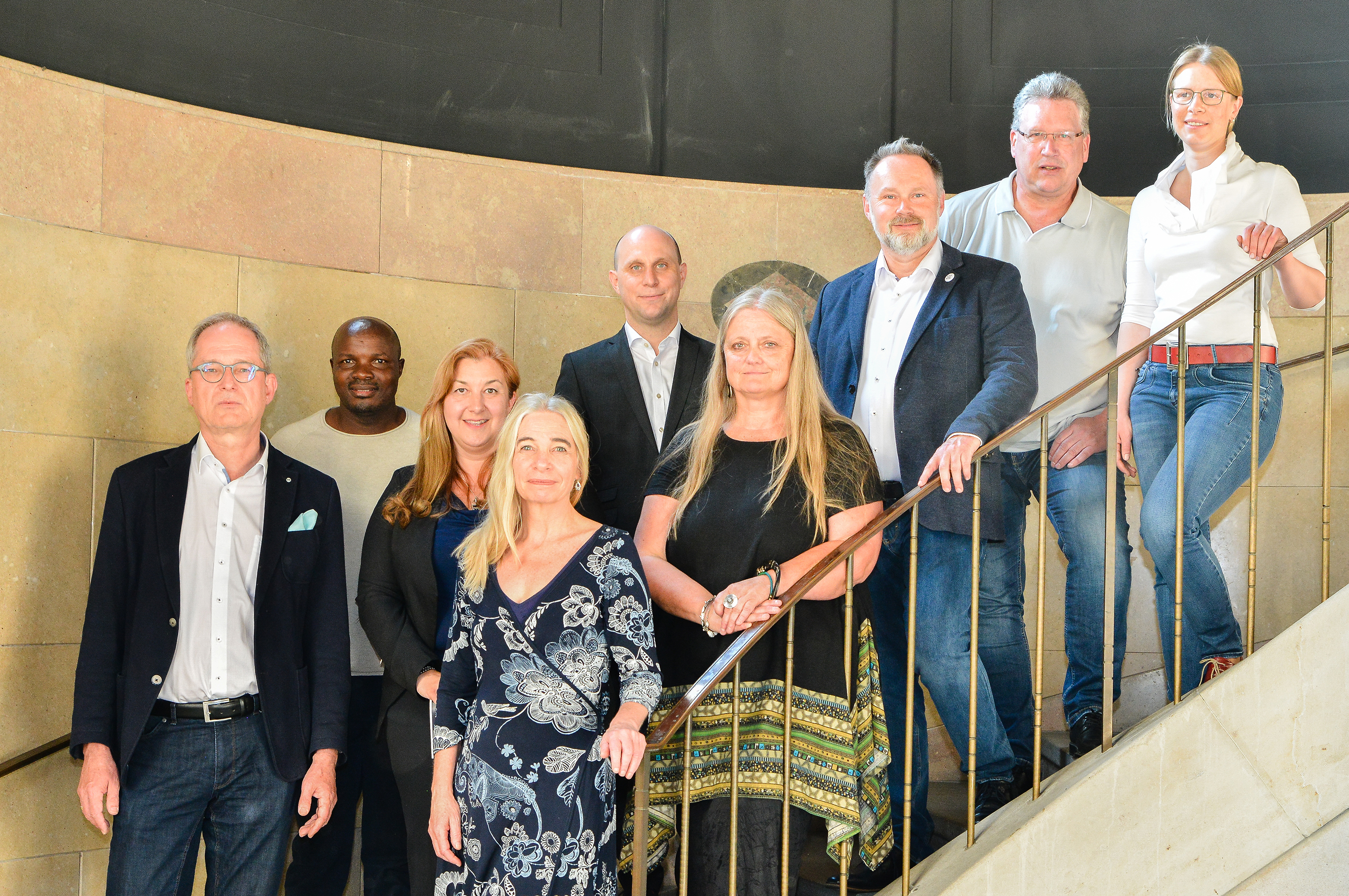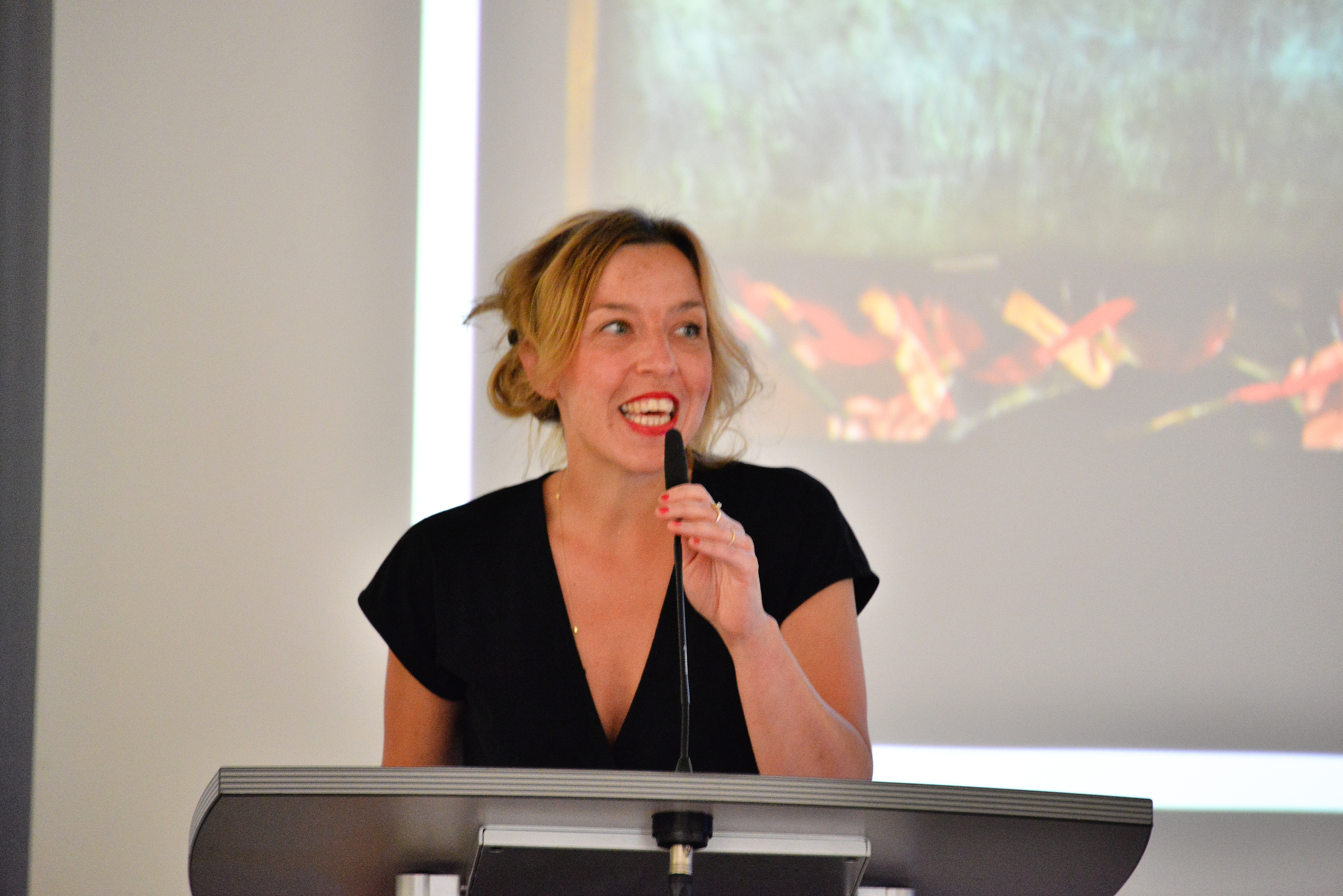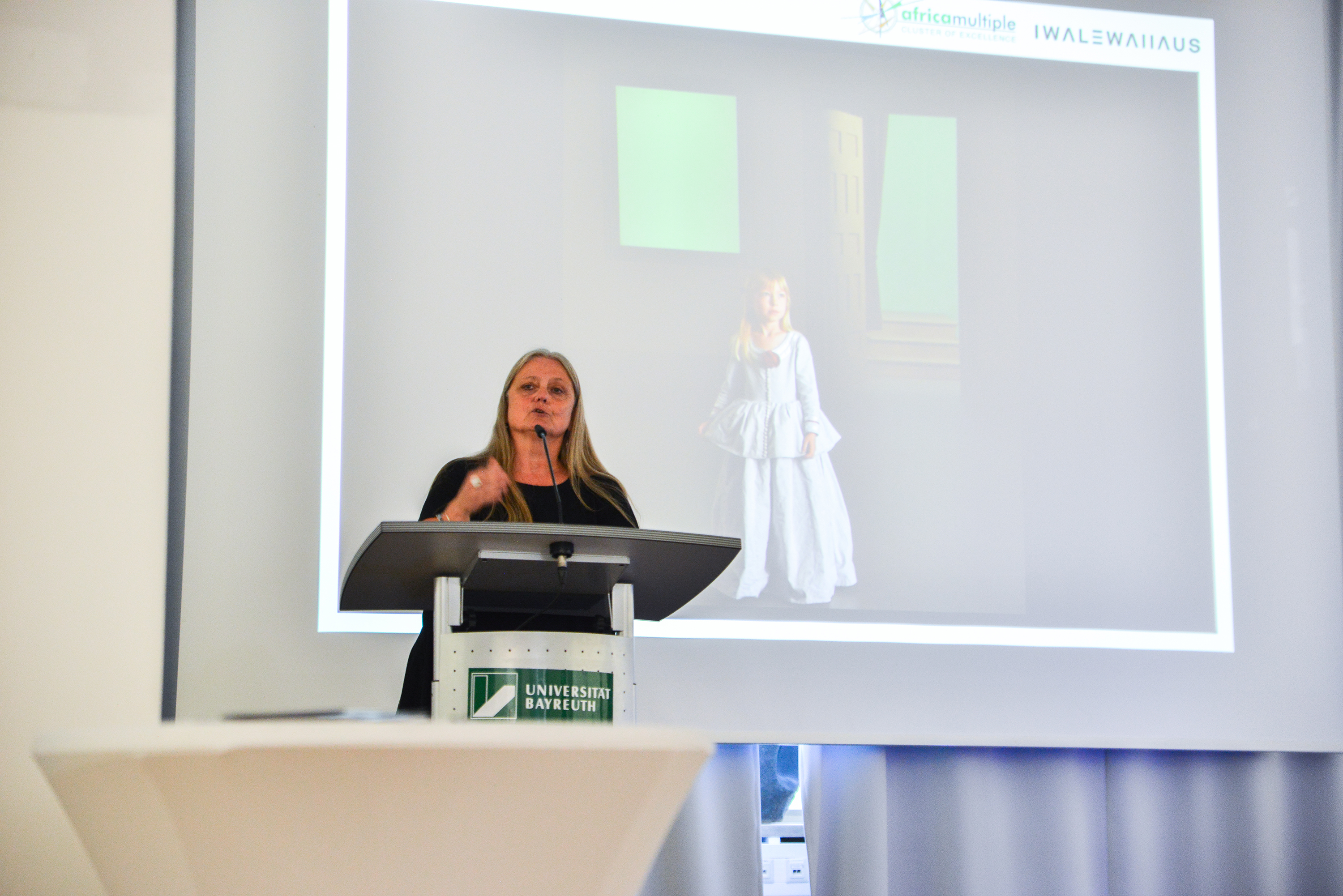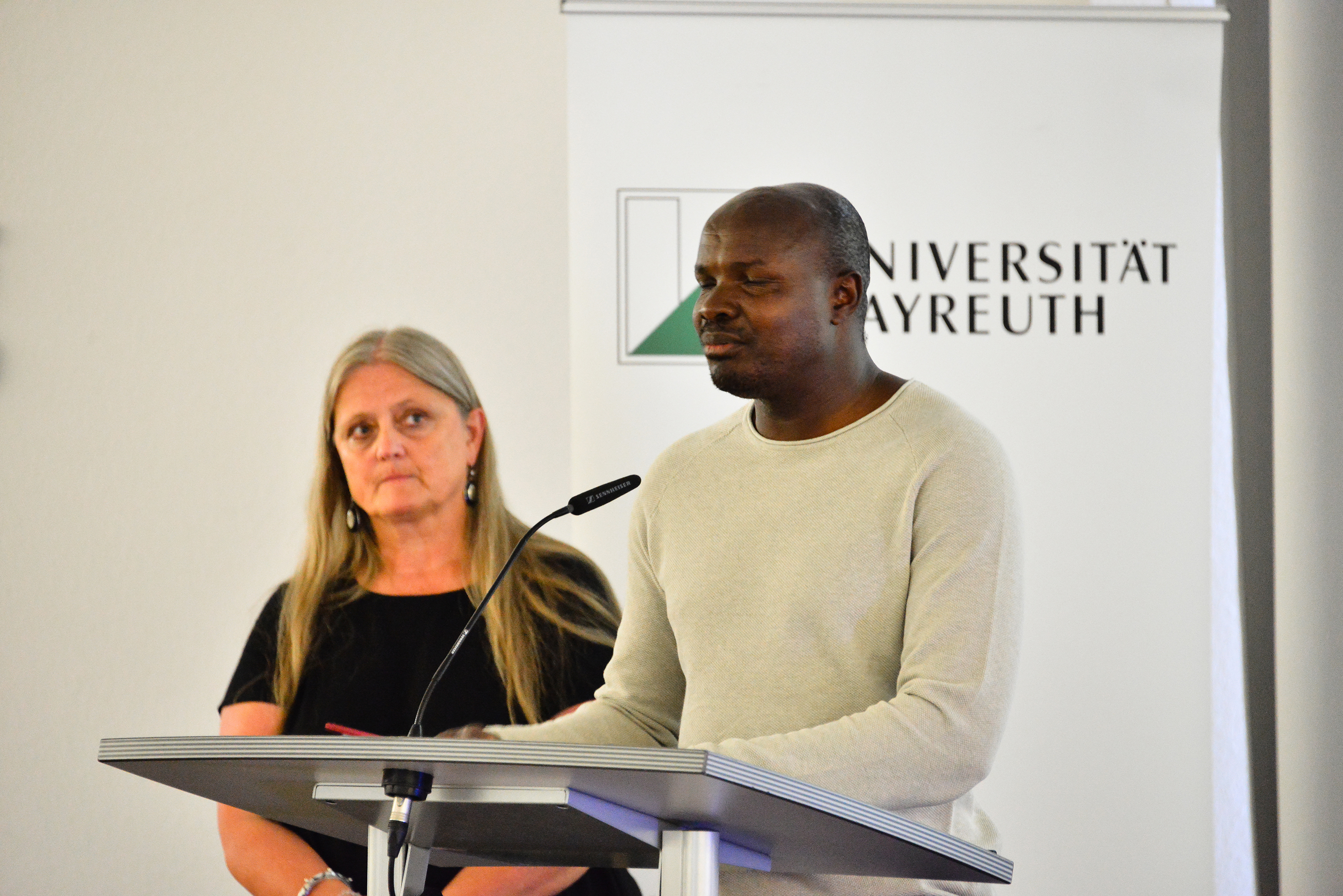News
Multimedia installation "To Be King" by Christine Dixie at Iwalewahaus
20.05.2022
Christine Dixie's installation To Be King was officially opened on May 11, 2022 at Iwalewahaus Bayreuth. Curated by Nicole Klug and Prof. Ute Fendler the exhibition had been initiatied by Prof. Enocent Msindo. The artist was present for the opening that attracted many guests from all over the world as well as local officials.
Text: Christian Wißler/Sabine Greiner Photos: Fabrica Lux/Robert Götze
On May 11 2022 the multimedia installation To Be King by Christine Dixie was officially opened to the public at Iwalewahaus in Bayreuth. The exhibition had been initiated by Prof. Dr. Enocent Msindo from the African Cluster Centre at Rhodes University in Makhanda, South Africa. The Cluster's Deputy Spokesperson and dean of Internationalisation and Public Engagement Prof. Dr. Ute Fendler together with Nicole Marina Klug, research associate at Iwalewahaus curated the exhibiton and event.
A conversation between Christine Dixie and curator Nicole Klug


